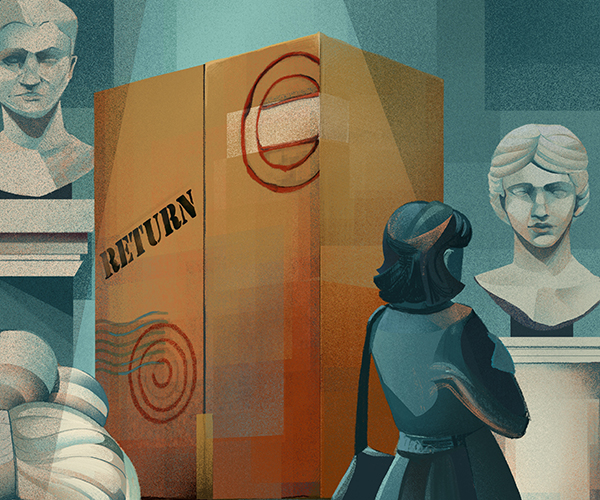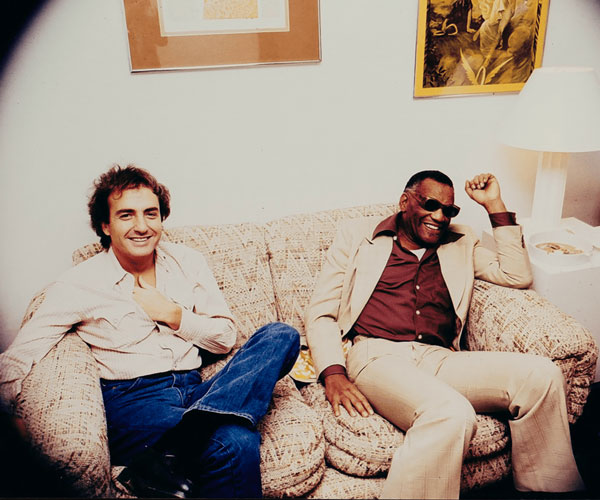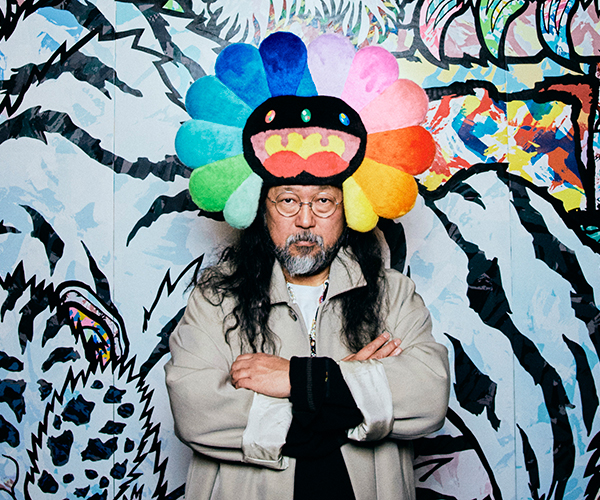Standing just outside the fourth floor's main gallery, one can look out over the ledge of the monumental stair and see each previous flight cascading downward, lower and lower to the ground floor. It's a cool visual effect, but also provides a place of spectacle within the museum that's fertile ground for people-watching.
"People like to go to the Spanish Steps [in Rome] to, literally, watch each other," says architect Farshid Moussavi. "It's a very social place and museums today carry that role. It's not just about going to engage with art, but also going to engage with other people."
But housed inside that hulking staircase is a second, enclosed stairway that connects with each floor as well. While the design has been compared to a Mobius strip, Moussavi says it was actually a necessity of engineering. Designing the secondary stairway as a traditional ascending column simply wasn't possible.
"It would have taken up a corner of the building, which frankly we don't have because our corners are not vertical," she says. "The building leans as it grows vertically."
The result was one of the museum's most surreal touches, and one that makes visitors active participants in choosing how they'll climb or descend through the structure.
"It becomes a very fun way to engage with not only how you connect with the different floors, but also how you engage with the other people in the museum," Moussavi says, adding that the enclosed stairway can also be an intriguing venue for sound installation artists. "It's a space of encounter."
Lunch & Listen Embracing its come-hang-out-with-us aesthetic, Gund Commons will host one-hour noon performances by emerging musicians from throughout the region twice every month. If you're in the neighborhood, you can brown-bag it every other Friday starting Nov. 9.
Living Space
One of the first things you'll notice about MOCA's new home is that there are two ways for the public to enter — one through the main lobby and another on the side of the building.
The aim is to entice people to stop by and take a look around or relax in what the museum calls its urban living room — all without having to buy a ticket.
"There is going to be a core group who appreciates contemporary art and, beyond that, you have a citizenship who may have a certain suspicion or skepticism," says MOCA executive director Jill Snyder. "How do you break down that barrier?"
Along with a cafe and museum store, the first floor has the two-story Gund Commons, which will also play host to speakers and musicians.
"It's going to be transformative for us," Snyder says. "We've never experienced what it's like to have this constant flow of people."
FLEX TIME
If the first floor seems versatile, it's because it was designed that way. The museum needs to raise 25 percent of its $2.6 million operating budget by way of earned income such as admission fees, store profits and space rental (only 7 percent of its previous $1.6 million operating budget had to be generated that way). That means everything on the first floor, including the gift shop, can be easily packed up and stowed away. "There's a business decision in making sure the ground floor had a high degree of flexibility," Snyder says. "The ability to rent it for special events was key to the business model."



